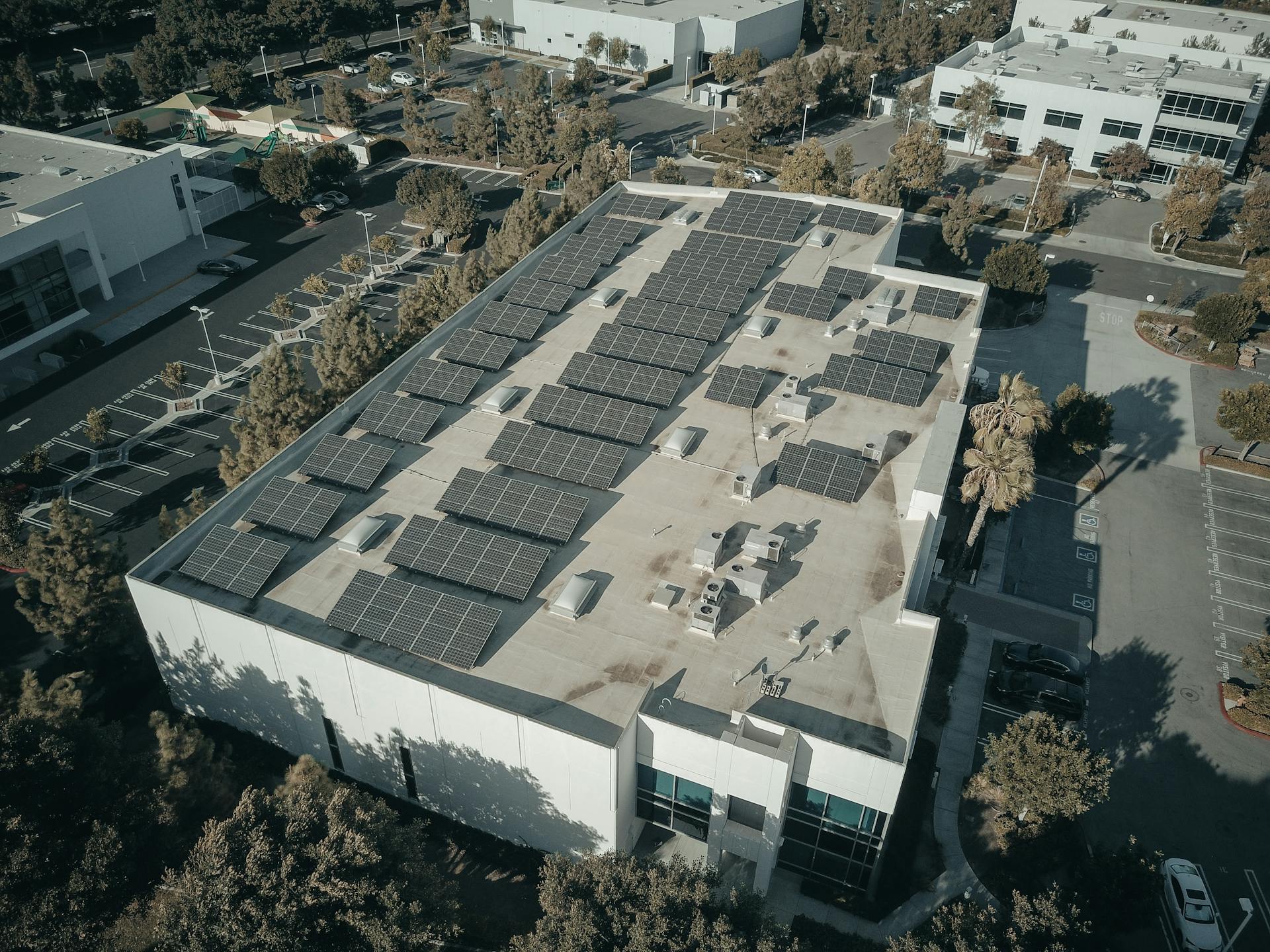
A commercial gym is a fitness facility that is available for use by the general public. These gyms typically offer a wide range of equipment and services, and are usually open at all hours of the day and night. Commercial gyms are usually much larger than traditional gyms, and often have multiple floors with a variety of different workout areas.
Most commercial gyms will have a free weight area, where users can lift dumbbells and barbells. This area is typically outfitted with a variety of benches and racks for a variety of different exercises. There is usually also a cardio area, which has treadmills, elliptical machines, rowing machines, and stationary bikes. This area is often used by people who are trying to lose weight or improve their cardiovascular health. In addition, many commercial gyms will also have a pool, sauna, and steam room.
Commercial gyms typically offer a wide variety of classes, both included in the price of a membership and for an additional fee. These classes can range from yoga and Pilates to spin class and kickboxing. Most commercial gyms will also have personal trainers on staff who can develop custom workout plans for individual users.
Commercial gyms can be found in most cities and towns, and are often located in strip malls or shopping centers. They usually have a wide range of membership options, with some gyms offering month-to-month memberships and others requiring a yearly contract. Commercial gyms typically have a higher monthly fee than traditional gyms, but often offer a wider range of services and amenities.
Curious to learn more? Check out: Why Are Gyms so Expensive?
What is the difference between a commercial gym and a home gym?
There are several key differences between a commercial gym and a home gym. One of the most important distinctions is that a commercial gym must meet the needs of multiple users, whereas a home gym is designed specifically for the individual. This means that commercial gyms must have a wide variety of equipment to accommodate different fitness goals, body types, and skill levels. In contrast, home gyms can be customized to the unique needs of the individual, making them more efficient and effective.
Another key difference is that commercial gyms are typically open to the public, which can create a number of challenges. For example, commercial gyms must constantly deal with issues such as noise, crowding, and hygiene. In addition, they must be staffed with knowledgeable and experienced personnel to ensure the safety of all users. Home gyms, on the other hand, are private and exclusive to the individual or family, which eliminates many of these issues.
Finally, commercial gyms typically charge a monthly membership fee, whereas home gyms require a one-time investment. This difference can make a big impact on the bottom line, especially for those who are on a tight budget. Overall, home gyms are usually more affordable and convenient than commercial gyms.
Take a look at this: Home Light Commercial
What are the membership fees for a commercial gym?
The membership fees for a commercial gym can vary depending on the gym, but they typically fall into one of two categories: a monthly or an annual fee. Monthly fees are typically charged per person, while annual fees are typically charged per family.
The average monthly fee for a commercial gym is $58. This fee can range from $30 to $100, depending on the location, size, and amenities of the gym. The average annual fee for a commercial gym is $696. This fee can range from $360 to $1,800, depending on the location, size, and amenities of the gym.
The monthly fee for a commercial gym is often the most expensive option, but it allows you to pay as you go and cancel at any time. The annual fee for a commercial gym is often the cheapest option, but it requires a commitment of at least one year.
Some commercial gyms offer discounts for members who sign up for multiple years, pay in advance, or refer new members. Most gyms also offer discounts for seniors, students, and military personnel.
Expand your knowledge: Farxiga Commercial Location
What is the average cost of a personal trainer at a commercial gym?
The average cost of a personal trainer at a commercial gym can vary depending on a number of factors. These can include the location of the gym, the length of the training sessions, the experience of the trainer, and the type of services offered. However, according to a recent study, the average cost of a personal trainer at a commercial gym is $50 per hour.
This rate may be higher or lower depending on the factors mentioned above. For instance, trainers who work in more affluent areas or who have more experience may charge higher rates. In addition, some gyms offer discounts for multiple training sessions, so the overall cost may be lower if you purchase a package of sessions.
The average cost of a personal trainer is just one consideration when deciding whether or not to hire one. You should also consider your fitness goals and whether or not you feel comfortable working with a trainer. If you have any specific health concerns, you may want to consult with your doctor before starting a training program.
If this caught your attention, see: How Much Would It Cost to Open a Gym?
What are the hours of operation for a commercial gym?
Assuming you would like an answer to this question:
The hours of operation for a typical commercial gym are Monday to Friday 6am-10pm, Saturday 8am-8pm, and Sunday 8am-6pm. However, some gyms are open 24 hours a day, 7 days a week. Some gyms also have extended hours on weekdays, opening as early as 5am and closing as late as 11pm.
What is the dress code for a commercial gym?
When working out in a commercial gym, it is important to be aware of the dress code in order to maintain a respectful and professional environment for all gym-goers. Although the specific dress code may vary slightly from gym to gym, there are some general guidelines that should be followed.
As a general rule, workout attire should be clean and comfortable. Clothing that is too loose or tight can be distracting and dangerous, so it is important to choose outfits that allow you to move freely and safely. In addition, revealing clothing can be distracting to others and is generally not appropriate in a public setting.
When it comes to shoes, sneakers or other athletic shoes are typically required in order to protect your feet and prevent slipping. Some gyms may also have specific requirements for footwear, such as no open-toed shoes or no flip-flops.
It is also important to remember that gym equipment is often shared, so it is important to wear clothing that is not excessively sweaty or dirty. In addition, long hair should be tied back to avoid getting it caught in equipment.
Overall, the dress code for a commercial gym is designed to promote safety, comfort, and respect for all gym-goers. By following these guidelines, you can help create a positive and enjoyable environment for everyone.
Here's an interesting read: No Doc Commercial Loans
What is the age limit for a commercial gym?
Across the United States, most commercial gyms do not have an age limit. However, some states have age restrictions in place for certain types of equipment or activities. For example, in California, minors are not allowed to use tanning beds, saunas, or steam rooms. Gym goers under the age of 18 must also have a parent or guardian present when signing up for a membership.
There are a few commercial gyms that have age limits in place. One notable example is SoulCycle, which only allows riders who are 18 years or older. This is likely due to the high-intensity nature of the workout and the use of specialized equipment.
While most commercial gyms do not have an age limit, it is always best to check with the individual gym before signing up for a membership. This is to ensure that you are aware of any age-related restrictions that may be in place.
What is the cancellation policy for a commercial gym?
The cancellation policy for a commercial gym typically depends on the contract that the member signs. However, most gyms have a clause that allows the member to cancel their membership at any time for any reason. This clause is usually buried in the fine print of the contract, so be sure to read over your contract carefully before signing. If you do decide to cancel your membership, you will likely have to provide written notice to the gym and may be required to pay a cancellation fee.
What are the amenities offered at a commercial gym?
When it comes to working out, people have different preferences. Some people like to workout at home, while others enjoy going to a commercial gym. There are many amenities that are offered at a commercial gym that can appeal to everyone.
One of the main amenities that are offered at a commercial gym is a wide variety of equipment. There are usually many different types of machines that are available for people to use. This can be helpful for people who are looking to change up their workout routine. Additionally, there is usually free weights and other types of equipment that people can use.
Another amenity that is often offered at a commercial gym is classes. There are usually a variety of classes that are available for people to take. This can be helpful for people who are looking for a workout routine that is already planned out. Additionally, it can be helpful for people who want to workout with other people.
Many commercial gyms also have a sauna or steam room. This can be a relaxing way to unwind after a workout. Additionally, it can help people to sweat out toxins and improve their skin.
Some commercial gyms also offer childcare. This can be helpful for parents who want to workout but do not have anyone to watch their children. Additionally, it can allow parents to get a workout in without having to worry about their children.
Finally, many commercial gyms offer a variety of deals and discounts. This can be helpful for people who are looking to save money on their gym membership. Additionally, it can be helpful for people who want to try out a new gym.
Take a look at this: Commercial Insurance Types
Frequently Asked Questions
What makes a commercial gym successful?
Commercial gyms need to offer a wide range of equipment and services in order to appeal to as many people as possible. Offering everything from weights, cardio machines, and swimming pools to personal trainers, group classes, and programming for target zones can be a successful strategy. Commercial gyms that specialize in certain activities or populations (such as Crossfitters) may have an advantage over those that do not. However, it is important that the gym provide a comprehensive selection of services in order to remain competitive.
Can I use my home gym equipment in a commercial gym?
There is no definitive answer, as the use of home gym equipment in a commercial setting could invalidate the manufacturer’s warranty and leave you out of pocket over the long run. When choosing equipment, consider whether the warranty covers your needs and ask for other options if it doesn’t.
Is the commercial treadmill right for your commercial gym equipment?
Yes! The commercial treadmill is the perfect tool for gyms that have a large customer base and need to keep their members healthy andhappy. By combining this machine with other commercial gym equipment, you’ll be able to offer your customers an amazing workout experience.
How much space do you need for a commercial gym?
A commercial gym typically requires 36 square feet per member. This space can accommodate a variety of pieces of equipment, including weight machines, cardio machines, and free weights. Larger gyms may require up to 75 square feet per piece of equipment.
How much does gyms charge for personal training?
Gyms charge an average of $60 per hour for personal training. This can range depending on how qualified your instructor is, how long the sessions are, how many sessions you book at once, and what level you train at.
Sources
- https://www.inspireusafoundation.org/commercial-vs-private-gyms/
- https://www.quora.com/What-is-the-difference-between-a-commercial-gym-and-a-hotel-gym-Can-I-build-my-strength-in-a-hotel-gym
- https://www.reddit.com/r/xxfitness/comments/mq4cu2/home_gym_vs_commercial_gym_do_you_notice_a/
- https://www.gymconcepts.com/pages/commercial-gyms
- https://wellbeingport.com/what-is-a-non-commercial-gym/
- https://www.coremaxxfit.com/news/the-difference-between-unit-gym-and-commercial-gym.html
- https://primofitnessusa.com/difference-commercial-gym-equipment-home-gym-equipment/
- https://www.akfit.com/blogs/own-your-fitness/8-tips-to-consider-when-planning-a-commercial-gym/
- https://brinkzone.com/home-gym-vs-commercial-gyms/
- https://trustyspotter.com/blog/gym-membership-cost/
- https://globalizethis.org/what-is-a-commercial-gym/
- https://www.loveatfirstfit.com/guides/average-cost-of-a-personal-trainer/
- https://setupmyhotel.com/formats/house-keeping/344-gym-rules.html
- https://www.reddit.com/r/personaltraining/comments/ze4yic/insight_on_cost_of_personal_trainer/
Featured Images: pexels.com


